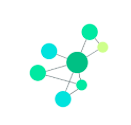IoT Must Be ‘Cloud-Native’ to Scale, Group Says

A proposed open-source framework for the Internet of Things released this week is being positioned as the first cloud-native architecture to be documented as an industry specification.
The Open Interconnect Consortium (OIC) formed last July said Thursday (Sept. 10) its proposed 1.0 IoT specification would offer maximum flexibility to developers, emphasizing that "cloud-native design is critical to unlocking the cost, scalability and reliability that the deployment of millions of devices requires."
The proposed spec includes a core framework along with capabilities associated with smart home device, "resource type," security and remote access. The spec also is intended to guide the OIC-sponsored IoTivity open source project that is developing connectivity standards for the IoT.
The group said its cloud-native approach adapts that platform technique to enable integration between on-premise and cloud use cases. Stressing the flexibility of its cloud-native approach, OIC said developers employing a "local-only" approach would not be required to rework their approach in order to achieve scale.
Taking a page from scaling cloud architectures designed to handle millions of mobile devices and interactions, consortium officials also stressed that "only cloud-native design will reliably scale to handle the millions of IoT devices and interactions we expect to see from successful projects."
The consortium said it expects to certify the first OIC-compliant products by the end of this year. "With OIC's approach companies can ship their own implementation or the open source implementation to meet a wide range of product requirements," Mike Richmond, OIC executive director, noted in a statement.
IoTivity, which is sponsored by IOC and backed by the Linux Foundation, released source code for its framework last month as it seeks to synchronize with the new IOC specification.
The groups maintain that the best way to achieve the scale needed for IoT deployments is to design applications from the beginning to run in the cloud. "An application that is architected to run on a single server then put in a [virtual machine] and shipped off to a cloud service provider is not cloud-native and requires additional work to create significant scale," they noted in a white paper released this week.
Cloud-native apps "are not monolithic with one central server providing hundreds of APIs," they added. "Cloud-native applications are composed of dozens of micro-services, each expressed as a RESTful API, whose provisioning code is in
a software container, and whose lifetime is limited to the interaction with a single client."
If and when IoT projects move from the drawing board to deployment, OIC notes, companies will face "Facebook-like scale problems," adding, "without cloud-native techniques, a million devices can't be managed successfully."
An OIC demo is available here.
The consortium based on Portland, Ore., recently announced a growing list of new members that include IBM, National Instruments and others.
Related
George Leopold has written about science and technology for more than 30 years, focusing on electronics and aerospace technology. He previously served as executive editor of Electronic Engineering Times. Leopold is the author of "Calculated Risk: The Supersonic Life and Times of Gus Grissom" (Purdue University Press, 2016).










